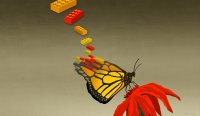The Learning Science Behind Analogies
Analogies help students remember new information by connecting it to frameworks or contexts they already know.
Your content has been saved!
Go to My Saved Content.“Hormones are like music.”
“Neuroplasticity is like a bonsai tree.”
“Epigenetics is like a Lego set.”
These are a few of the analogies that students in my IB Psychology class recently generated as part of a review exercise in preparation for their IB exam. I have become such a huge fan of this approach that there is no concept that goes un-analogized in my classroom.
The Learning Science Behind Analogies
I first began using analogy while teaching the French Revolution in a world history class. I would require my students to write an analogous revolution using characters from familiar contexts. My students created every revolutionary context imaginable. I’ve had a Pokemon revolution, a Rick and Morty revolution, a Lion King revolution and even a Friends revolution (with Ross as Robespierre—of course).
I was always struck by how well my students would do on assessments of objective knowledge on the French Revolution after this experience in spite of the fact that they had no direct instruction in regard to specific content. The analogy work taught them all they needed to know.
This piqued my interest. As a psychology teacher, I am consistently curious about the science of learning and thus sought out evidence and neurological explanations for my own anecdotal experience. This motivation caused me to take a deep dive into why analogies work so well to help students learn.
One of my favorite cognitive researchers, Jim Davies of Carleton University, explains that analogies are so powerful because “creating analogies as we navigate the environment helps us learn. Analogies involve reframing novel encounters using knowledge of familiar, relationally similar contexts stored in memory.”
The science of memory tells us that a novel stimulus is more easily remembered if it has an existing framework or assimilative context to which it can “connect.” The more established the framework, the more readily accessible that stimulus will subsequently be. My history students may struggle to remember details about King Louis XVI in isolation, but when those details are cognitively connected to the lame, ineffective, and politically impotent Jerry from their favorite television show Rick and Morty, recall is easier.
This also applies to more complex relational concepts and phenomena. For example, research by Lucas Keefer and Mark Landau found that analogy aided in student comprehension of nuclear fission by comparing known elements (pool cue, pool ball) to novel elements (neutron, emission source). Creating such an analogy provides a cognitive framework for the student to integrate and represent the structural relations between elements in fission.
I will frequently create analogies for my students in order to aid in their understanding and comprehension of a given concept or phenomenon. This approach is supported by two studies on the impact of analogy on both short- and long-term memory recall, both of which find that the use of analogies significantly increases recall and learning. This research affirms cognitive scientist David Jonassen’s contention that “analogies are the single most powerful instructional strategy one can use.”
While I don’t believe there is any “single most powerful” instructional strategy, I do use analogies frequently with my students in a variety of ways. I will often require students to create analogies after learning a new concept or to use analogies as a review activity prior to a summative assessment.
What to Watch Out For
Both utilizing analogy to teach a concept or phenomenon as well as requiring your students to develop their own analogies will undoubtedly increase comprehension, recall and understanding. However, there are a few caveats to bear in mind.
Be careful of bias that could emerge as a result of analogy: A study by Stanford researchers Paul Thibodeau and Lera Boroditsky found that participants who read an article comparing a city’s crime problem to an aggressive beast spontaneously generated more aggressive and punitive crime-reduction strategies, whereas those who read an article framing the same facts in terms of a disease recommended addressing the root causes of crime. The authors found that “exposure to even a single metaphor can induce substantial differences in opinion about how to solve social problems: differences that are larger, for example, than preexisting differences in opinion between Democrats and Republicans.”
Be sensitive to oversimplification: An analogy can be thought of as a type of “model.” Like any model, it trades ease of cognitive access for detail. You do want to ensure that your students’ analogies are not so simple as to be useless.
For example, as my psychology class recently reviewed material for an exam, a student compared pheromones to a text message. Their explanation was that both travel over a distance between two individuals. I said, “That’s true, but what is unique about pheromones?” The student responded that pheromones act on all members of the species equally. So I said, “Can you think of anything that has a shared effect on all humans?” The student thought for a minute and then said, “Money! Everyone loves money!” While this analogy certainly isn’t perfect, it more accurately gets at a key element of the concept. Always require your students to explain their analogies and be on the lookout for oversimplification.
Hormones are like music because both have the capacity to alter our mood. Neuroplasticity is like a bonsai tree because both can be shaped through environmental inputs. And epigenetics is like a Lego set because while both contain constraints, they both allow for individuality and potentiality within those constraints.
By requiring my students to engage in deeper levels of processing and anchor that processing to familiar existing knowledge, I am leveraging what we know about cognition to help my students learn. And best of all, we’re having fun doing it.
